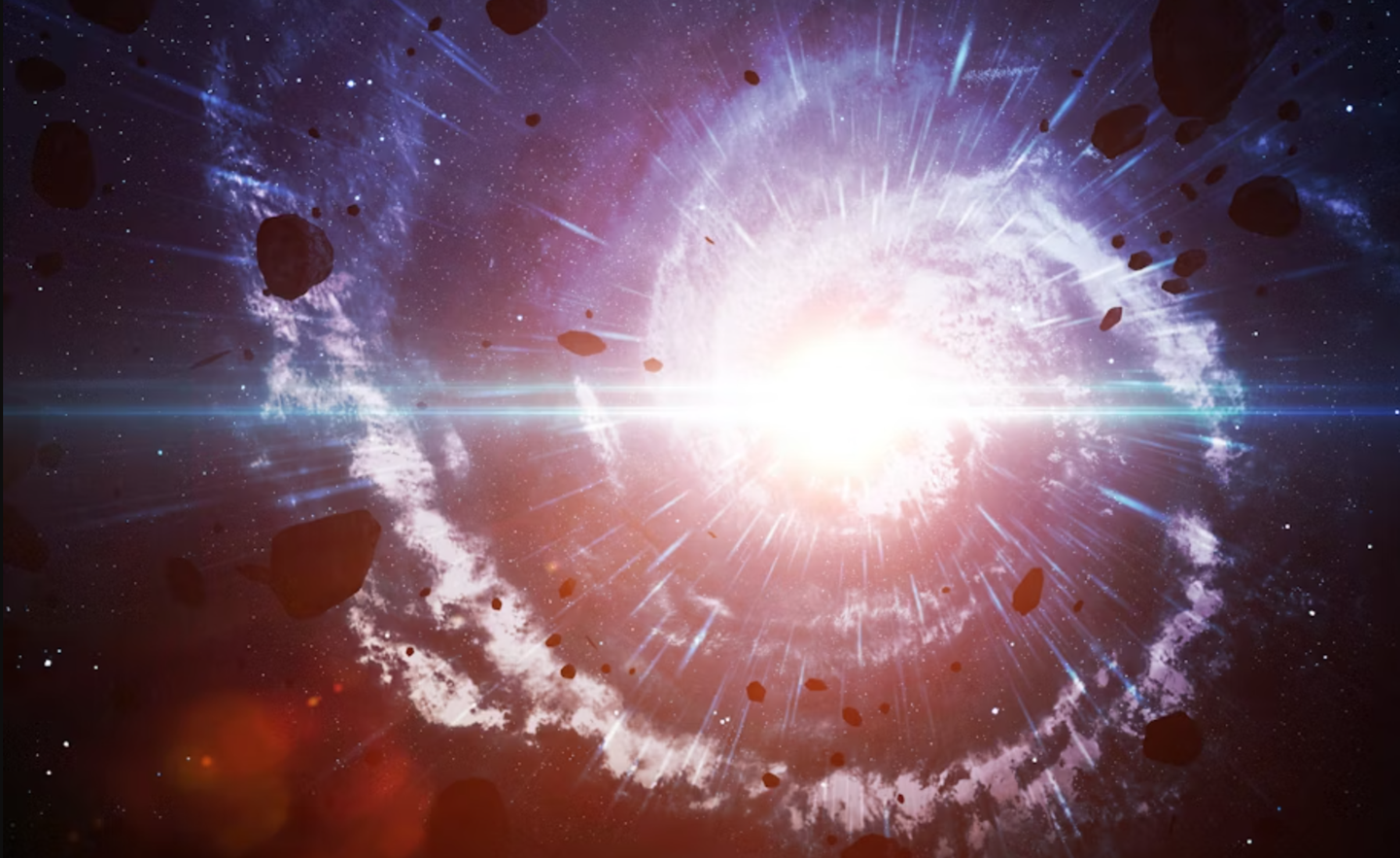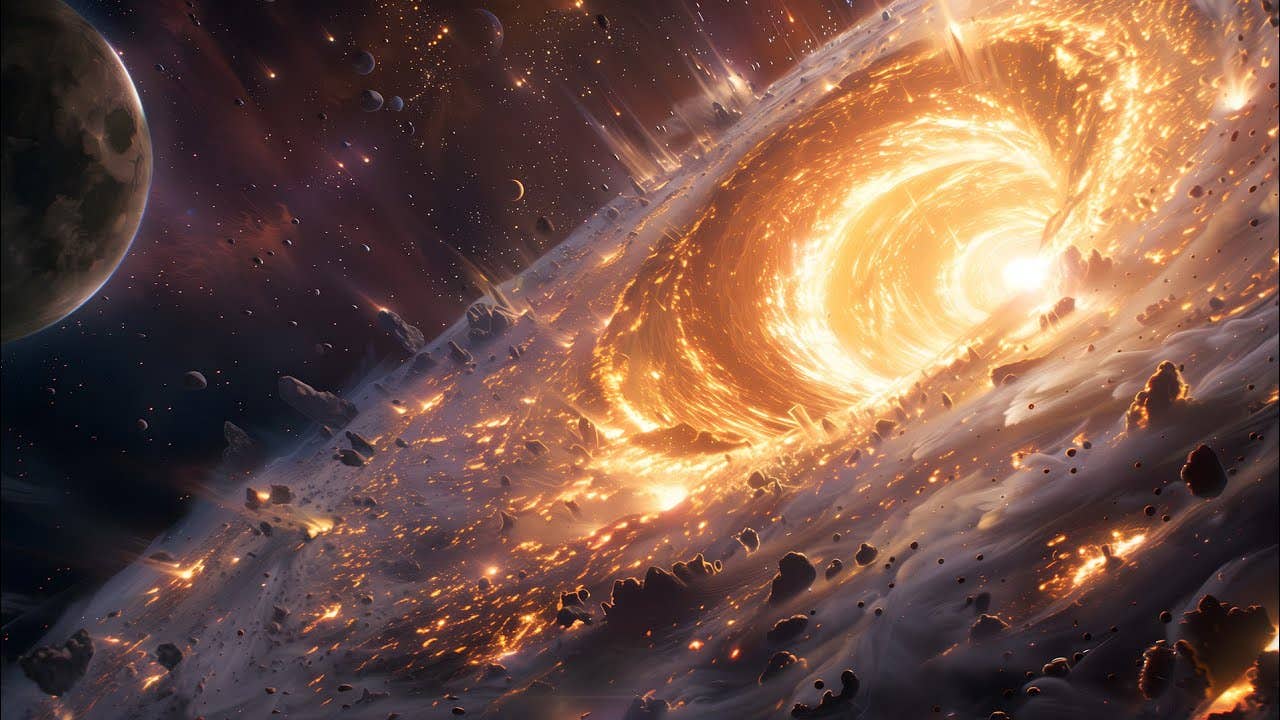New theory challenges Big Bang, dark matter, and dark energy in the birth of the universe
A new theory says the universe expands in fast bursts, not one Big Bang—removing the need for dark matter and dark energy.

A physics professor has proposed a bold new idea: the universe didn’t begin with one Big Bang. (CREDIT: Shutterstock)
In the search to understand how the universe came to be, a new theory is rewriting the script. Instead of one massive, fiery birth like the Big Bang, this idea suggests the cosmos has been growing in sudden, powerful steps — invisible, lightning-fast bursts that shake the very foundation of physics.
These events, called temporal singularities, may hold the key to the mystery of how galaxies form and why the universe keeps expanding faster and faster. Most importantly, this theory dares to explain it all without relying on dark matter or dark energy — two invisible forces that scientists have been hunting for decades but have yet to find.
A New Way to Picture the Universe
Dr. Richard Lieu, a physics professor at The University of Alabama in Huntsville, believes that cosmic history is shaped not by one beginning but by many. In his recent paper published in Classical and Quantum Gravity, Lieu offers a bold alternative: the universe unfolds through a sequence of energy spikes — rapid bursts in time that ripple across all of space. Each burst floods the universe with matter and energy, kickstarting expansion and helping to build the vast structures we see today.
“The new model can account for both structure formation and stability, and the key observational properties of the expansion of the universe at large,” Lieu explains. These bursts, or singularities, “uniformly affect all space” and replace the need for the invisible stuff cosmologists have long assumed fills the cosmos.
This model builds on Lieu’s earlier work from 2024, which proposed that gravity might not always need mass to operate — an idea that sparked intense discussion and drew over 41,000 reads. That version also attempted to explain the way galaxies stay together without using dark matter.
But the earlier model relied on a concept known as “negative density.” While mathematically useful, negative density remains hard to explain in real-world terms. The newer version drops that piece while still solving the same puzzles — and more.
Related Stories
Unseen Bursts That Shape Space
These temporal singularities happen so quickly and so rarely that they’re impossible to detect with current tools. But their impact may be enormous. Like the spark of the Big Bang, they bring matter and energy into existence — but unlike the Big Bang, they don’t break the laws of physics.
Lieu points out that this is what separates his model from earlier alternatives. British astronomer Sir Fred Hoyle once argued against the Big Bang by proposing a “steady-state” universe, where matter is continuously created as space expands. That idea was appealing but flawed — it violated the law of mass-energy conservation.
Lieu’s theory, in contrast, holds that matter and energy appear and disappear suddenly — but always in a way that follows the rules. “Interestingly enough, there is no violation of conservation laws,” he says. “These singularities are unobservable because they occur rarely in time and are unresolvedly fast.”
The origin of these bursts remains unknown, just like the exact cause of the Big Bang. But that uncertainty doesn’t make the model weaker. In fact, it might make it more realistic.
Pressure That Pushes the Universe
Lieu’s model explains more than just how matter forms. It also tackles why the universe keeps expanding at an accelerating pace — a phenomenon usually blamed on dark energy.
The answer lies in something called negative pressure. Unlike the kind of pressure you feel from a tire or water pipe, negative pressure has a strange effect in space. It pushes out instead of in. That makes it a perfect candidate to drive the universe’s runaway expansion.
“An example is the negative pressure exerted by a magnetic field along a field line,” Lieu says. He notes that even Albert Einstein considered negative pressure in his 1917 work on the Cosmological Constant — the first known attempt to explain why the universe doesn’t collapse under gravity.
When positive mass-energy is paired with negative pressure, it can drive expansion without breaking physics. The math still works. More importantly, Lieu’s model avoids needing the controversial “negative density” idea from his earlier paper.
This balance also makes the universe’s structure more stable. The singularities don’t just create matter — they set the stage for galaxies to grow and hold together, a role that has long been assigned to dark matter. But in this view, there’s no need for dark matter at all.
Fleeting Forces With Big Effects
The paper’s title — Are dark matter and dark energy omnipresent? — gives away Lieu’s key point. He believes they’re not always there. In fact, he says, they only appear in rare, fleeting moments. The rest of the time, they’re gone.
“They only appear in brief instances during which the matter and energy do fill the entire universe uniformly,” he explains. Between those moments, they simply do not exist.
This model shares one basic feature with the traditional view: a cosmic burst that shapes the universe. But while the standard model says that happened once — the Big Bang — Lieu argues that it happens over and over again.
These repeated bursts could explain not just the beginning of the cosmos but also why it continues to expand and evolve. With each pulse, matter is distributed across space. That matter then clumps together under gravity, forming galaxies, clusters, and other cosmic structures.
The sudden nature of these events may also explain why scientists have never directly seen dark matter or dark energy. “That could be the reason why dark matter and dark energy have not been found,” Lieu suggests.
Testing the Theory From Earth
The next step is proving the theory. While it sounds futuristic, Lieu says the answer might be surprisingly close — not in space, but on Earth.
Rather than waiting for images from the James Webb Space Telescope, researchers could use powerful ground-based telescopes like the Keck Observatory in Hawaii or the Isaac Newton Group of Telescopes in Spain. These tools can gather deep-field images of distant galaxies across a range of redshifts — a way of measuring how fast things in space are moving away.
By slicing that data by redshift, astronomers could look for sudden jumps in how far away galaxies appear. If found, those jumps might point to past singularities — evidence of a universe that grows in pulses rather than through smooth, continuous expansion.
“Given sufficient redshift resolution effected by the redshift slicing, one might just find that the Hubble diagram exhibits jumps,” Lieu says. That would be a powerful clue that something other than the Big Bang may be at work.
For now, Lieu’s model remains a theory — but one with powerful implications. If true, it could solve two of the biggest mysteries in cosmology: what dark matter and dark energy really are, and why we’ve never been able to find them.
Instead of hunting for invisible ingredients, scientists might start listening for the echoes of ancient, unstoppable bursts — the hidden rhythms of a universe still in motion.
Note: The article above provided above by The Brighter Side of News.
Like these kind of feel good stories? Get The Brighter Side of News' newsletter.
Joshua Shavit
Science & Technology Writer | AI and Robotics Reporter
Joshua Shavit is a Los Angeles-based science and technology writer with a passion for exploring the breakthroughs shaping the future. As a contributor to The Brighter Side of News, he focuses on positive and transformative advancements in AI, technology, physics, engineering, robotics and space science. Joshua is currently working towards a Bachelor of Science in Business Administration at the University of California, Berkeley. He combines his academic background with a talent for storytelling, making complex scientific discoveries engaging and accessible. His work highlights the innovators behind the ideas, bringing readers closer to the people driving progress.



